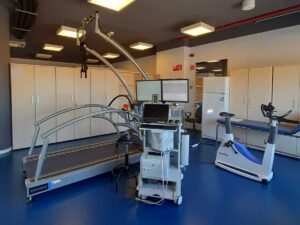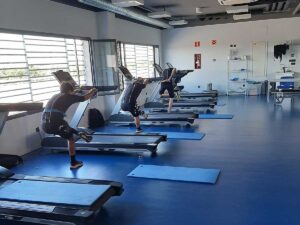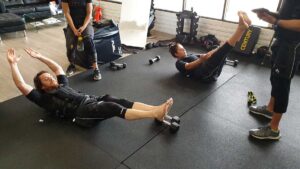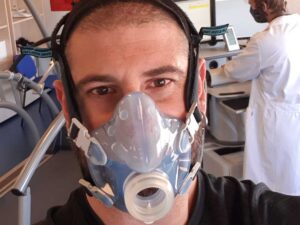Voluntary and electrically stimulated muscle contractions differ in muscle fiber activation and metabolism [2]. During submaximal voluntary muscle contractions the fibers are progressively recruited in an orderly manner from small to large according to the intensity of contraction considered from the point of view of the distribution of the muscle fibers in the quadriceps femoris from the depth of the muscle to the surface, and that small fibers (type 1) are mainly found deep within the muscle, while large fibers (type 2) are found on the surface [3,4].
On the other hand, the recruitment of muscle fibers with electrostimulation depends on the current density and is mainly about muscle fibers located directly below the electrodes, since the current density decreases with increasing depth of the muscle. In this case, the muscle fibers are recruited from the surface of the muscle to the deep part and the higher the intensity, the more deeply the fibers are recruited regardless of the type of fibers [5,6,7].
Taking into account the above, voluntary muscle contraction and electrostimulation muscle contraction can be considered as complementary stimuli of different nature, which induce different acute physiological effects.
The acute application of EMS with voluntary contractions in pathological or over-trained subjects who present incomplete levels of voluntary muscle activation facilitates the recruitment of additional muscle fibers and therefore allows an increase in strength compared to a voluntary contraction without EMS [8].
Some recent articles showed that voluntary contractions together with EMS could provide some advantages in training programs that aim to improve motor recruitment in healthy subjects compared to voluntary contractions without EMS or passive EMS application [9,10,11, 12.13].
Evidence suggests that submaximal tasks generate greater muscle fiber recruitment with voluntary contraction plus EMS than without EMS or passive EMS application (Figure 1). And they are likely to generate greater gains in motor performance after a period of training.
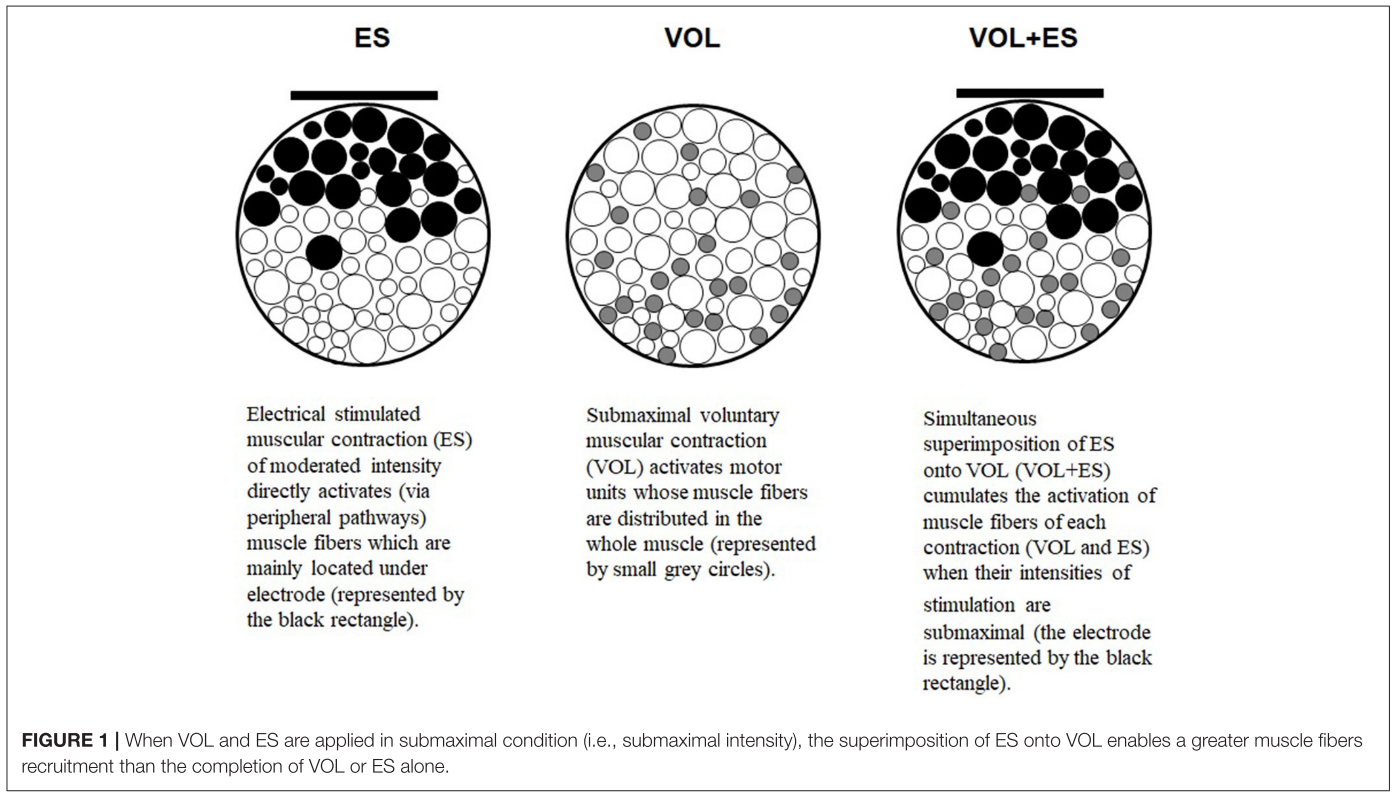
CONCLUSION
Analyzing all of the above we can reach the conclusion that EMS together with voluntary contractions at a submaximal intensity could constitute an interesting training technique that is complementary to traditional training. For absolute confirmation, other work must be done.
BIBLIOGRAPHY
- Thierry Paillard. (2018). Training Based on Electrical Stimulation Superimposed Onto Voluntary Contraction Would be Relevant Only as Part of Submaximal Contractions in Healthy Subjects . Frontiers in Physiology, 9, 20-23.
- Vanderthommen, M., and Duchateau, J. (2007). Electrical stimulation as a modality to improve performance of the neuromuscular system. Exerc. Sport Sci. Rev. 35, 180–185. doi: 10.1097/jes.0b013e318156e785
- Henneman, E., Somjen, G., and Carpenter, D. O. (1965). Functional significance of cell size in spinal motoneurons. J. Neurophysiol. 28, 560–580. doi: 10.1152/jn.1965.28.3.560
- Lexell, J., Henriksson-Larsén, K., and Sjöström, M. (1983). Distribution ofdifferent fibre types in human skeletal muscles. 2. A study of cross-sections ofwhole M. vastus lateralis. Acta Physiol. Scand. 117, 115–122.
- Feiereisen, P., Duchateau, J., and Hainaut, K. (1997). Motor unit recruitment order during voluntary and electrically induced contractions in the tibialis anterior. Exp. Brain Res. 114, 117–123. doi: 10.1007/PL00005610
- Vanderthommen, M., Duteil, S., Wary, C., Raynaud, J. S., Leroy-Willig, A., Crielaard, J. M., et al. (2003). A comparison of voluntary and electrically induced contractions by interleaved 1H and 31P-NMRS in humans. J. Appl. Physiol. 94, 1012–1024. doi: 10.1152/japplphysiol.00887.2001
- Gregory, C. M., and Bickel, C. S. (2005). Recruitment patterns in human skeletal muscle during electrical stimulation. Phys. Ther. 85, 358–364
- Koutedakis, Y., Frischknecht, R., Vrbová, G., Sharp, N. C., and Budgett, R. (1995). Maximal voluntary quadriceps strength patterns in Olympic overtrained athletes. Med. Sci. Sports Exerc. 27, 566–572. doi: 10.1249/00005768-199504000-00015
- Wahl, P., Hein, M., Achtzehn, S., Bloch, W., and Mester, J. (2014). Acute metabolic, hormonal and psychological responses to cycling with superimposed electromyostimulation. Eur. J. Appl. Physiol. 114, 2331–2339. doi: 10.1007/s00421-014-2952-4
- Wahl, P., Hein, M., Achtzehn, S., Bloch, W., and Mester, J. (2015). Acute effects of superimposed electromyostimulation during cycling on myokines and markers ofmuscle damage. J. Musculoskelet. Neuronal. Interact. 15, 53–59.
- Wahl, P., Schaerk, J., Achtzehn, S., Kleinöder, H., Bloch, W., and Mester, J., (2012). Physiological responses and perceived exertion during cycling with superimposed electromyostimulation. J. Strength Cond. Res. S26, 2383–2388. doi: 10.1519/JSC.0b013e31823f2749
- Matsuse, H., Shiba, N., Takano, Y., Yamada, S., Ohshima, H., and Tagawa, Y. (2013). Cycling exercise to resist electrically stimulated anatagonist increases oxygen uptake in males: pilot study. J. Rehabil. Res. Dev. 4, 545–554. doi: 10.1682/JRRD.2012.04.0067
- Mathes, S., Lehnen, N., Link, T., Bloch, W., Mester, J., and Wahl, P. (2017). Chronic effects of superimposed electromyostimulation during cycling on aerobic and anaerobic capacity. Eur. J. Appl. Physiol. 117, 881–892. doi: 10.1007/s00421-017-3572-6


